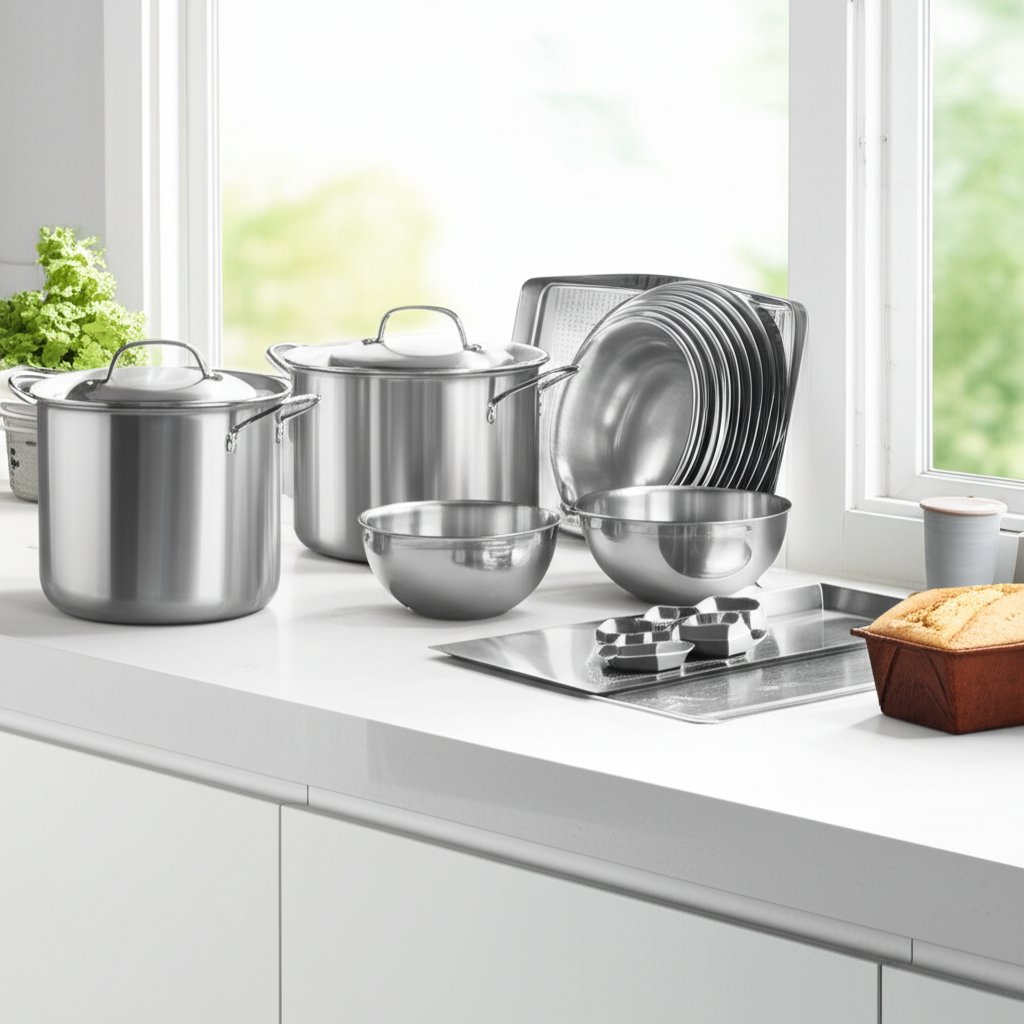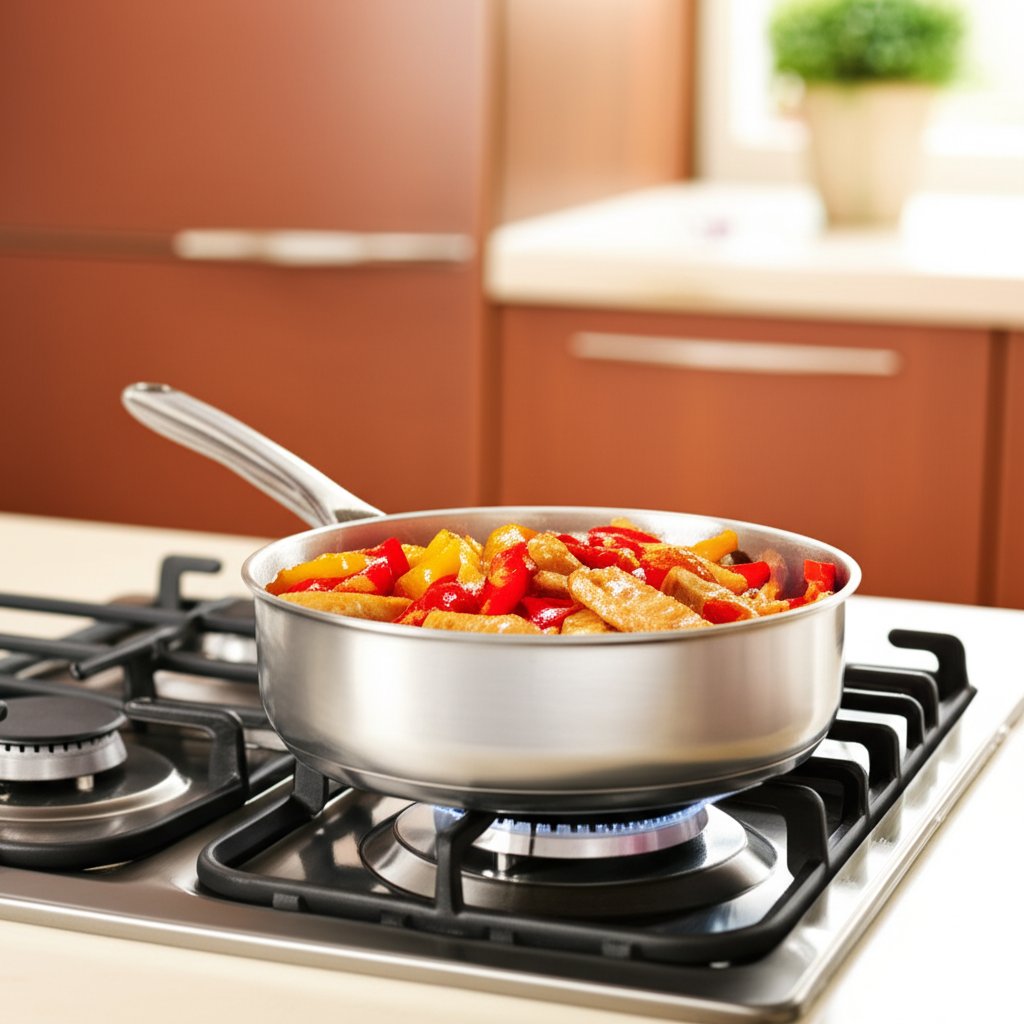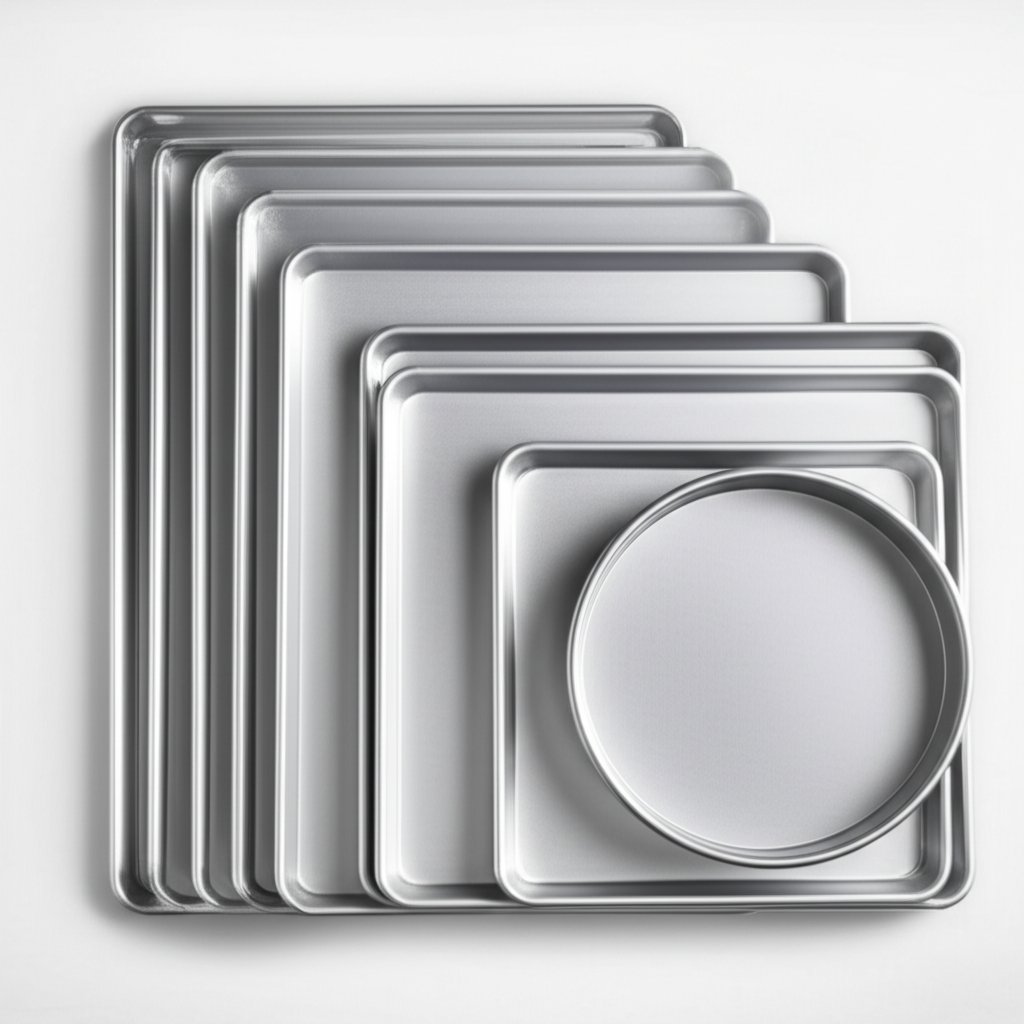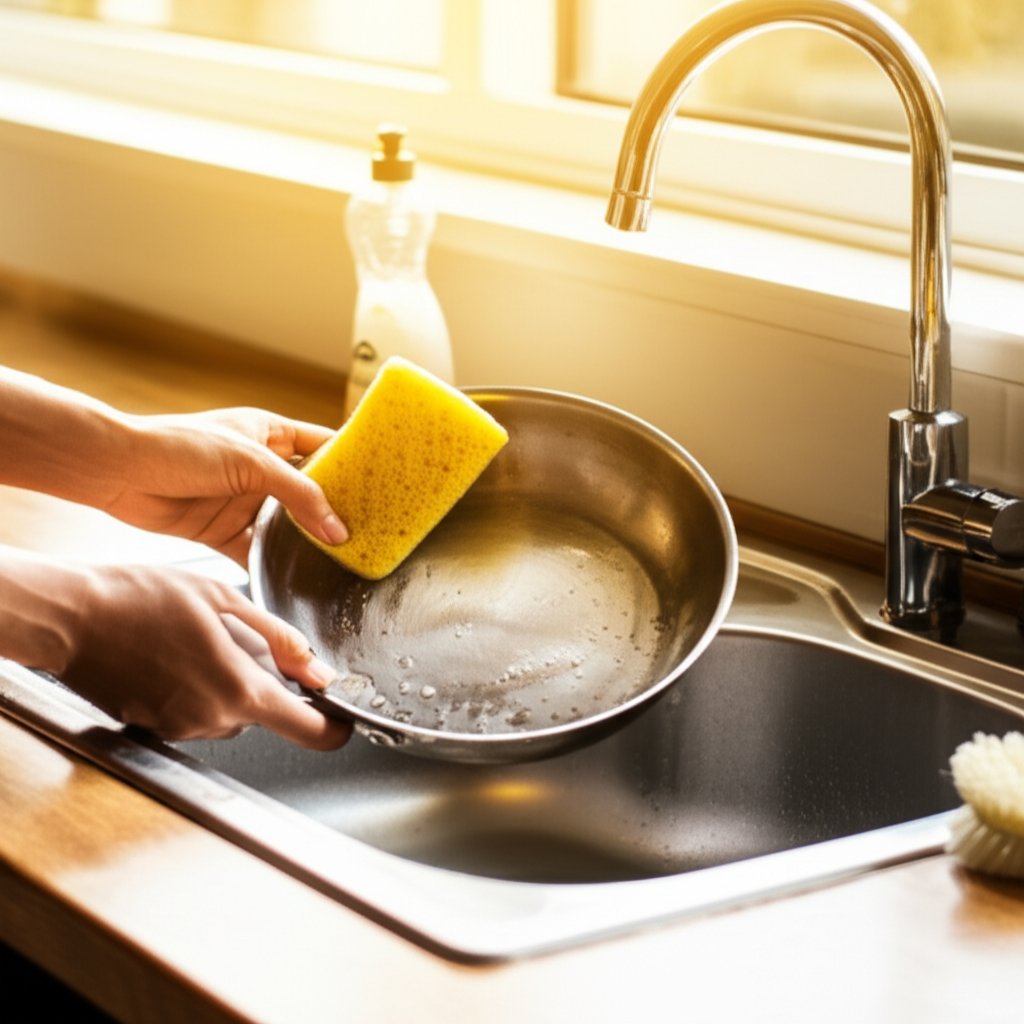
Ever wondered why almost every kitchen—whether at home, in a bustling restaurant, or at your favorite catered event—has at least one aluminum pan? The answer is simple: versatility and performance. From lightweight foil pans used at family gatherings to the robust aluminum tray in a professional chef’s arsenal, these pans have become a go-to for cooks everywhere. But whats an aluminum pan really, and why do so many people rely on them for everyday cooking?
Imagine prepping a big batch of brownies for a bake sale or roasting vegetables for dinner. Chances are, you’ll reach for an aluminum pan. Their popularity isn’t just a trend—it’s rooted in real, practical benefits. Aluminum’s exceptional heat conductivity means your food cooks evenly, helping you avoid those dreaded burnt edges or undercooked centers. Plus, their light weight makes them easy to handle, whether you’re sliding a tray of cookies in the oven or serving up a casserole at a party.
Cost is another factor that can’t be ignored. Compared to other materials, aluminum pans are typically more affordable, making them accessible for everyone—from home bakers to large-scale caterers. And with aluminum pans for baking and aluminum plates for food available in countless sizes and styles, there’s truly an option for every recipe and occasion.
Throughout this guide, you’ll discover everything you need to know about choosing, using, and caring for aluminum pans—ensuring you get the most from this kitchen essential without any guesswork. Whether you’re curious about the best aluminum pans for baking or want to understand the safety of aluminum plates for food, we’ll break it all down so you can cook with confidence.

When you think of aluminum cookware, do you picture only those disposable foil trays at parties? The world of aluminum pans is much broader—and smarter—than that. If you’ve ever wondered about the difference between a shiny anodized aluminium pan and a classic cast aluminum skillet, you’re not alone. Let’s break down the three main types of aluminum cookware you’ll encounter, so you can confidently choose the right one for your kitchen.
Cast aluminum pans start with molten aluminum poured into molds, resulting in thick, sturdy cookware. Imagine a pan that feels solid in your hand yet isn’t as heavy as cast iron. Cast aluminum pans are known for their excellent heat distribution and moderate weight, making them a favorite for everyday cooking. However, because the metal is relatively soft, these pans can dent if dropped and may react with acidic foods unless coated or seasoned.
Ever seen a sleek, dark-gray pan that feels especially tough? That’s likely an anodized aluminium pan. Anodizing is an electrochemical process that bonds a layer of aluminum oxide to the surface, making it about 30% harder than stainless steel and far less reactive with food. This process results in pans that are scratch-resistant, non-porous, and easy to clean. Anodized aluminum bakeware is especially valued for its non-reactivity, meaning you can cook tomato sauce or lemon chicken without worrying about metallic taste or leaching.
If you love easy cleanup, non-stick coated aluminum pans are probably already in your kitchen. These pans start with an aluminum base and are finished with a food-safe non-stick coating (often PTFE or ceramic). The result? Eggs slide out with no fuss, and gentle cleaning is all that’s needed. When comparing aluminum vs nonstick pans, remember that most non-stick pans use aluminum for its heat conductivity, but the real difference is the added coating for effortless food release.
| Type | Durability | Price | Heat Retention | Maintenance |
|---|---|---|---|---|
| Cast Aluminum | Good (can dent) | Affordable | Very Good | Hand wash; may need seasoning |
| Anodized Aluminum | Excellent (scratch/corrosion resistant) | Moderate to High | Excellent | Easy to clean; avoid harsh chemicals |
| Non-Stick Coated Aluminum | Fair to Good (depends on coating) | Varies (usually affordable) | Good | Gentle cleaning; avoid metal utensils |
So, which is best for you? If you want a pan that’s budget-friendly and versatile, cast aluminum pans are a solid bet. For those who prioritize longevity and cooking a variety of foods—including acidic recipes—anodized aluminum bakeware is hard to beat. And if easy cleanup is your top priority, a non-stick coated aluminum pan makes everyday cooking a breeze.
Still unsure about aluminum vs nonstick pan choices? Think about your cooking style and what matters most: durability, price, or convenience. Up next, we’ll tackle a common question—are these pans safe to use in your kitchen? Let’s separate fact from fiction.
When you’re standing in the kitchen, spatula in hand, you might find yourself pausing—are aluminum pans safe? With so many opinions swirling around, it’s easy to feel unsure. Let’s separate fact from fiction so you can cook with confidence.
For decades, rumors have circulated that aluminum in pots and pans could leach into food and cause serious health problems, even diseases like Alzheimer’s. This concern traces back to the 1960s, when scientists observed aluminum in the brains of Alzheimer’s patients. The resulting “Aluminum Hypothesis” sparked widespread fear, leading many to question, is it safe to cook in aluminum pans or bake with them?
But what does current science really say?
Here’s the good news: the overwhelming consensus among food safety experts is that aluminum pans safe for everyday cooking when used as intended. The amount of aluminum that might leach into food is extremely low—especially with modern cookware, which is often anodized or coated to prevent reactivity. According to food science experts, anodized aluminum has a non-reactive, protective coating that prevents leaching, even when you’re cooking acidic recipes like tomato sauce or lemon chicken.
"Although it is highly debated, the general consensus is that aluminum is safe to cook with... Anodized aluminum has been treated to prevent leaching, making it more durable and non-reactive." — Bryan Quoc Le, Ph.D., Food Science Consultant
Still, there are a few scenarios where you should exercise care:
If you’re still concerned, there are excellent alternatives. Stainless steel or aluminum cookware both have their place. Stainless steel is non-reactive and especially good for acidic foods, while modern anodized aluminum pans offer a safe, high-performance option for everyday use. And for baking, are aluminum baking pans safe? Yes—when they’re anodized or coated, you can bake with confidence.
So, is it safe to cook in aluminum pots and pans? For most people and most recipes, the answer is yes. Just use common sense: choose quality pans, avoid cooking high-acid foods in untreated aluminum, and replace cookware that’s seen better days. Up next, we’ll explore why aluminum’s unique properties make it such a standout for even, reliable cooking performance.

When you’re standing at the stove or sliding a tray into the oven, have you ever wondered why some pans leave food unevenly cooked or burnt in spots? The answer often comes down to thermal conductivity—a scientific term that simply means how well a material transfers heat. Sounds complex? It’s actually quite straightforward: the higher the thermal conductivity, the faster and more evenly your cookware heats up.
In practical terms, when you use aluminum pots and pans, you’ll notice they respond almost instantly to changes in burner temperature. Whether you’re sautéing vegetables or bringing water to a boil, aluminum’s superior heat transfer means less waiting—and less risk of burning or undercooking your meal.
Imagine baking a tray of cookies or searing a piece of fish. With some materials, you might get crispy edges but underdone centers. That’s because uneven heating creates “hot spots.” But aluminum cooking pots and pans distribute heat so evenly that every bite—center or edge—cooks at the same rate. This is especially important for delicate recipes, like custards or cakes, where precision matters.
This is why so many chefs and home cooks swear by cooking in aluminum pan—it’s not just about convenience, but about achieving reliable, professional-quality results every time.
Let’s break down how aluminum compares to other popular cookware options:
In fact, many stainless-steel pans include an aluminum layer in their base to improve performance. This hybrid design combines the best of both worlds: durability and heat efficiency.
Absolutely! One of aluminum’s greatest strengths is its versatility. Not only can aluminum pans go in the oven, but you can bake in aluminum pans for everything from cakes to casseroles. Their even heat distribution ensures your baked goods rise and brown beautifully, while their lightweight nature makes them easy to handle—even when full.
So next time you’re prepping a family meal or a big batch for a party, reach for your favorite aluminum cooking pots or large aluminum pans. You’ll get fast, consistent results—no matter what’s on the menu. Up next, we’ll match the right aluminum pan to your recipe, ensuring you always get the best results for any cooking task.
Ever wondered why your cookies bake perfectly on one pan but burn on another? Or why your roasted chicken turns out juicy in some pans and dry in others? The secret lies in matching the right aluminum cooking pans to your recipe. Let’s break down the best aluminum pan options for every kitchen task—so you can cook, bake, and serve with confidence.
Tip: Always check if you can bake in aluminum pan for your recipe—most are oven-safe and deliver beautiful, consistent results.
Because aluminum heats up fast and evenly, you gain more control, whether you’re browning, sautéing, or frying.
Look for pans with snug-fitting lids to lock in moisture and flavor during long simmers.
Imagine prepping lasagna, mac and cheese, or desserts in advance—then simply popping the aluminum catering pans into the oven for quick service. Cleanup is effortless, so you can focus on your guests instead of the dishes.
In summary, the right aluminum pan can elevate any recipe—whether you’re roasting, baking, frying, simmering, or catering for a crowd. By choosing the best pan for each task, you’ll enjoy even cooking, easy cleanup, and reliable results every time. Up next, let’s break down pan sizes and their best uses so you can shop with confidence for your next kitchen project.

Ever found yourself in the baking aisle, staring at a wall of pans and wondering, “Which size do I actually need?” Choosing the right aluminum pan sizes can make the difference between a perfectly baked cake and a kitchen disaster. Whether you’re prepping for a family dinner, catering an event, or stocking up for your bakery, understanding foil pan dimensions ensures your recipes turn out just right—and makes shopping much less stressful.
Let’s break down the most popular foil pan sizes and how each fits into your cooking routine. The table below covers everything from classic half-sheet pans to round aluminum pans and those handy 8x8 aluminum pans for brownies and bars. Think of this as your quick-reference guide for matching recipes to the right pan, so you never have to second-guess your choice again.
| Size Name | Dimensions (inches) | Common Uses |
|---|---|---|
| Full Size Steam Table Pan | 20 3/4 x 12 3/4 x 1 11/16–3 3/8 | Buffets, catering, roasting large meats, serving big crowds |
| Half Size Steam Table Pan | 12 3/4 x 10 3/8 x 1 1/2–4 3/16 | Casseroles, roasting vegetables, family-size meals, meal prep |
| Third Size Steam Table Pan | 12 3/4 x 6 7/8 x 3 5/16 | Side dishes, small roasts, prepping ingredients |
| Full Sheet Pan | 18 x 26 | Baking large batches of cookies, sheet cakes, roasting vegetables |
| Half Sheet Pan | 13 x 18 | Everyday baking, brownies, roasting, pastries |
| Quarter Sheet Pan | 9 1/2 x 13 | Small batch baking, toasting nuts, reheating leftovers |
| 8x8 Aluminum Pan | 8 x 8 | Baking brownies, bar cookies, small casseroles |
| 9x13 Cake or Casserole Pan | 9 x 13 | Sheet cakes, lasagna, baked pasta dishes |
| Round Aluminum Pans | Varies (6–12 diameter) | Cakes, pies, quiches, deep-dish pizzas |
| Pie Pan | 5–12 diameter x 3/4–1 13/16 deep | Fruit pies, quiches, tarts |
| Loaf Pan | 1–5 lb. capacity (varies by brand) | Bread, meatloaf, pound cake |
When you’re deciding between foil baking pans sizes, think about the recipe and serving size. For example, a full size pan is perfect for catering events, while an 8x8 aluminum pan is ideal for small desserts or side dishes at home. Round aluminum pans work best for cakes and pies, and loaf pans are your go-to for homemade bread or meatloaf.
Now that you know how to choose the right pan size for every job, let’s move on to making your aluminum pans last—discover the best tips for cleaning and care in the next section.

Ever pulled your favorite aluminum pan from the cupboard, only to find it dull, stained, or—worse—blackened? You’re not alone. With the right care, your pots and pans aluminum can last for years, looking nearly as good as new. But aluminum does require a bit of know-how to keep it performing at its best. Let’s break down the essential steps for cleaning, seasoning, and storing your pans—so you can avoid common pitfalls and enjoy flawless results every time you cook.
Pro Tip: If your pan is warped, heavily scratched, or corroded—or if food sticks no matter what—it may be time to replace it. Damaged heavy duty aluminum pans with lids won’t heat evenly and are harder to keep clean.
Did you know you should season aluminum pan before first use—much like cast iron? Seasoning helps maintain the pan’s color and improves its natural nonstick qualities. Here’s how to season an aluminum pan:
This simple process protects your cookware and helps prevent sticking—especially important for natural (uncoated) aluminum pans.
Proper storage is essential for keeping your foil pans with foil lids and everyday aluminum cookware in top shape. Here’s a quick checklist of do’s and don’ts:
Wondering, is nordic ware dishwasher safe? For most aluminum pans—including Nordic Ware—hand washing with mild detergent is recommended for best results and long-term durability. Dishwashers can strip seasoning, dull finishes, and damage nonstick coatings due to harsh detergents and high heat. Anodized aluminum and nonstick pans are especially sensitive—so always check your manufacturer’s care guide before tossing them in the dishwasher.
For more in-depth cleaning tips, including how to restore shine to stubbornly blackened pans, check out this comprehensive guide: How to Clean Aluminum Pans: 2025 Guide to a New Shine.
With a few simple habits, your aluminum cookware—whether it’s a trusty everyday skillet or a stack of foil pans with foil lids for your next gathering—will deliver top-notch results year after year. Next, let’s wrap up our guide by focusing on what to look for in high-quality pans and the importance of sourcing premium raw materials.
When you’re standing in the cookware aisle or browsing online, the sheer variety of options—foil pan, heavy-duty skillet, or even vintage aluminum pans—can feel overwhelming. So, what truly matters when selecting aluminum cookware that will serve you well for years?
Imagine prepping a holiday meal: a high-quality tin pan won’t buckle under a roast, and a thick-gauge baking sheet ensures your cookies bake evenly every time. Whether you’re drawn to the nostalgia of vintage aluminum pans or the practicality of modern designs, focus on construction and fit for your kitchen needs.
Here’s something most shoppers overlook: the foundation of great aluminum cookware is the purity and quality of the raw material itself. Even the best design can’t compensate for inferior aluminum. That’s why reputable manufacturers, such as Shengxin in China, invest in advanced production lines and strict quality controls to produce high-purity aluminum profiles—the building blocks of premium pans and trays.
For those curious about the industrial side—think large-scale foodservice or manufacturing—understanding the source of your aluminum matters. Companies like Shengxin specialize in producing the high-grade aluminum profiles that form the backbone of quality cookware, ensuring every aluminum tray or pan delivers on both safety and performance. This attention to material integrity is what separates everyday pans from those you’ll reach for time and again.
In summary, whether you’re stocking up for your next event, adding to your home collection, or searching for the reliability of kitchen dance aluminum pans, prioritize type, thickness, and—most importantly—the quality of the aluminum itself. That’s the real secret to cookware that stands the test of time and delivers delicious results, meal after meal.
Yes, modern aluminum pans—including anodized and nonstick-coated varieties—are considered safe for daily use. Scientific studies and food safety authorities confirm that the amount of aluminum leaching during normal cooking is minimal and not linked to health risks. For best results, avoid using damaged or heavily scratched pans, and opt for reputable brands.
Absolutely. Aluminum pans are oven-safe and ideal for baking due to their excellent heat conductivity. Whether you're making cookies, cakes, or casseroles, aluminum pans ensure even cooking and browning. Always check if your pan is coated or nonstick for specific temperature limits.
Hand wash aluminum pans with mild soap and a soft sponge. Avoid harsh abrasives or metal utensils, especially on coated surfaces. For stubborn stains, use baking soda paste. Season uncoated pans with a light layer of oil before first use. Dry thoroughly to prevent oxidation, and check the manufacturer’s guidelines for dishwasher safety.
Cast aluminum pans are thick and sturdy, offering good heat retention but can be reactive with acidic foods. Anodized aluminum pans are treated for enhanced durability and non-reactivity, making them scratch-resistant and safe for acidic dishes. Nonstick aluminum pans have a special coating for easy food release but require gentle care to maintain the coating.
High-quality raw aluminum ensures better heat distribution, durability, and resistance to warping or corrosion. Manufacturers like Shengxin use advanced processes to produce pure aluminum profiles, resulting in reliable cookware for both home and commercial use.
 บริการออนไลน์
บริการออนไลน์ 0086 136 3563 2360
0086 136 3563 2360 sales@sxalu.com
sales@sxalu.com +86 136 3563 2360
+86 136 3563 2360